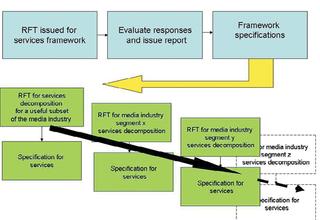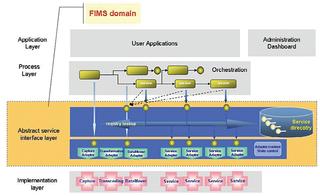Time Flies When You're Having Fun!

One of the topics I have discussed in this column often is Service-Oriented Architecture (SOA). And since I am just enough of a nerd to find SOA fun, I thought it would be good to update you on some recent developments.
Certainly work around SOA has progressed a great deal over the last year. I have been involved in a joint task force of the Advanced Media Workflow Association (AMWA) and the European Broadcast Union (EBU), named FIMS (Framework for Interoperable Media Services).
This has grown out of work done by the Media Services Architecture Group (MSAG) in the AMWA as well as the EBU CP (Common Processes) and NP (Networked Production) groups. Both organizations had been working independently, but the rapid adoption of SOA in the industry has driven a desire to quickly seek common specifications or standards.
Both groups have made significant education efforts to help the media industry understand what is at stake and why SOA is important. The industry has continued adoption and has a much clearer understanding of issues, but proprietary solutions are flourishing. FIMS seeks to identify common solutions. This has led to an issuance of a Request for Technology (RFT) to the industry.
AN ELUSIVE GOAL As some background, we are all aware that file-based production is now with us. Most of the installations to date have been created as isolated production islands. Creating a truly comprehensive and integrated production system remains an elusive goal for many organizations. There are many reasons why this goal is still unmet. Critical issues still exist in file-based systems; interoperability between technologies is difficult. Plus there are problems with maintainability and the lack of scalability in a dynamic media environment. Business models and processes are always changing and some enterprises continue to have problems handling media on standard IT equipment. In addition, one must take into account rapid technology innovation cycles as well as the availability of personnel knowledgeable in both media and IT.

Fig. 1: FIMS Standardization Process
SOA is becoming popular in many IT domains for resolving these kinds of Partial list of considerations for a media asset management readiness study and strategy for digitization. problems. It was recognized early on by the FIMS group that the special characteristics of the media industry had to be kept in mind in identifying solutions. These include the fact that the media in question consists of comparatively large file sizes and is a highly collaborative and geographically distributed craft-oriented industry with significant human workflows. In addition, streaming is a special-case means of data consumption and processing and coding can degrade the quality of the data. Multiple resolutions sometimes represent the same object and there are a large number of exception cases. There are also numerous special time requirements such as "real time," a high level of continuous availability is expected, and the size of organizations varies.
So with all of this in mind, FIMS has set out to identify technologies that enable the creation of standard software interfaces for services in a standard framework. Initially, the focus is on the framework and not on specific services. Specific services will be the subject of future RFTs. See Fig. 1 for the general pattern that future FIMS work is expected to follow.
While FIMS will accept partial responses, there are three main deliverables being asked of respondents to the RFT. The first is to detail a framework in which services could be described. What the elements of such a framework are is open to discussion, but at a minimum, FIMS will be describing:
- • A service description model
- • A service interface language
- • A service directory
- • A means of service communication
- • Service lifecycle management
- • Service SLA management
- • Media files management
- • Time and synchronization requirements
GOING FORWARD
In addition, respondents are asked to describe how their framework would work with three very basic services. These are "media transform," "media move," and "media capture." These three services will be used to virtually "test" submitted technologies from a common basis.

Fig. 2: FIMS Scope
Another, very interesting, submission being requested of responders is an "industry decomposition." This is a vision of a service-oriented media industry. In order to guide future RFTs, FIMS is seeking visions of how the industry breaks down from its highest level processes to the most basic atomic services. This decomposition will inform the direction and prioritization of the work of the Task Force.
It is currently expected that the task force will be issuing a preliminary report at the IBC2010 conference in Amsterdam in September. I would encourage any reader with an interest in the subject to participate. Responses are accepted from anyone. Membership in AMWA or EBU is not required. For more information e-mail ebu_amwa_adm@list.ebu.ch or you can check out the work in detail at wiki.amwa.tv/ebu.
Many a kid has said from the back seat of the car, "Are we there yet?" Well, we haven't established media industry standards in SOA, but we are progressing quickly and we will get there! You can Count on IT!
John Footen is the Chief Technology Officer at Chime Media. He is also co-author of the book "Service-Oriented Media Enterprise." He can be reached atjfooten@chimemedia.com.
Get the TV Tech Newsletter
The professional video industry's #1 source for news, trends and product and tech information. Sign up below.
With more than three decades of M&E experience under his belt, John Footen is a managing director who leads Deloitte Consulting LLP’s media technology and operations practice. He has been a chairperson for various industry technology committees. He earned the SMPTE Medal for Workflow Systems and became a Fellow of SMPTE. He also co-authored a book, called “The Service-Oriented Media Enterprise: SOA, BPM, and Web Services in Professional Media Systems,” and has published many articles in industry publications.












